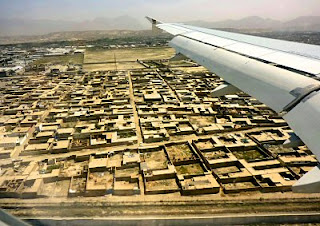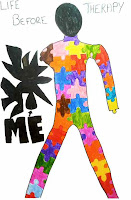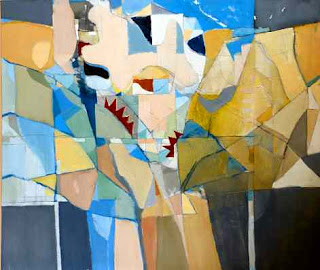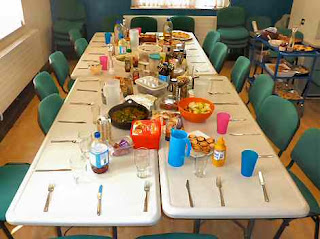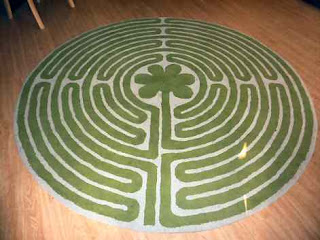A good question - why Kabul indeed - what has this to do with English PD services?
There is a connection, but it is a bit tenuous - and it's probably better if Greenshrink explains it: www.blogspot.greenshrink.com
Bodd's Blog
The trials and tribulations of life with borderline personality disorder and some of the things that the government is doing to try and improve the situation.
Tuesday 12 July 2011
Wednesday 30 March 2011
And finally... sent to Coventry
Nobody really knows why we say that - though the deliberate exclusion of people who have been 'sent to Coventry' must interest us in the PD programme (although we only have about 30 hours left of our existence). A little research into these matters (courtesy of good old Wikipedia) does again immerse us into the medieval history of middle England. The first recorded use of the term was for a 1765 fox-hunter who clearly did not have modern communication skills:
The ship-shaped modern architecture intrigued us: symbolising modernity and careful control in all its internal arrangements (like artfully chosen framed pictures firmly screwed to the walls, soft furnishings untainted by six years continuous use, and and ever-more efficient use of limited therapy and administrative space). But the overall curved-and-straight lines of the building did make us think of increasingly fanciful analogies - of flexibility and control, chaos and order, soft and hard, feminine and masculine, yin and yang... Perhaps they had already engaged the Feng Shui consultants.
After collecting our data (and being given a handsome sandwich lunch), we were shown round. The most irregular feature of the whole builing, we found, was the large bug-eyed dayglo-coloured fluffy cat sitting peacefully on the desk of a staff member who was away. When we learned that the cat was frequently flung around the building, or at least around the open-plan office, we were reassured that things were not so very different from anywhere else.
The photos for the blog were easy to choose and agree. The Olive Tree itself symbolises the beautiful analogy of needing to appreciate nature as it is, rather than demanding it be different; some of the paintings are used in the elegant brochure with which the service explains itself to outsiders; the masks symbolise the dramatic impact of the programme's psychodrama sessions; and the abstract painting in the reception area, we were convincingly assured, was an angry portrayal of Kermit the Frog.
John Barry having sent the Fox Hounds to a different place to what was ordered was sent to Coventry, but return'd upon giving six bottles of Claret to the HuntToday, we managed just half a bottle of Cava in a cafe near the station, to celebrate the end of our trail. But the city itself was also famous as the home of Lady Godiva in the eleventh century, and for being a major area of inland devastation following World War II bombing in November 1940. But we were definitely not impressed with the spaghettoid nature of the ring road, and the way its intricacies were unsolvable by a sophisticated modern GPS with a sophisticated modern operator (who felt she was losing her sophisticated modern demeanour as we realised we were going in circles). But all was resolved in time for a punctual arrival and warm welcome.
The ship-shaped modern architecture intrigued us: symbolising modernity and careful control in all its internal arrangements (like artfully chosen framed pictures firmly screwed to the walls, soft furnishings untainted by six years continuous use, and and ever-more efficient use of limited therapy and administrative space). But the overall curved-and-straight lines of the building did make us think of increasingly fanciful analogies - of flexibility and control, chaos and order, soft and hard, feminine and masculine, yin and yang... Perhaps they had already engaged the Feng Shui consultants.
After collecting our data (and being given a handsome sandwich lunch), we were shown round. The most irregular feature of the whole builing, we found, was the large bug-eyed dayglo-coloured fluffy cat sitting peacefully on the desk of a staff member who was away. When we learned that the cat was frequently flung around the building, or at least around the open-plan office, we were reassured that things were not so very different from anywhere else.
The photos for the blog were easy to choose and agree. The Olive Tree itself symbolises the beautiful analogy of needing to appreciate nature as it is, rather than demanding it be different; some of the paintings are used in the elegant brochure with which the service explains itself to outsiders; the masks symbolise the dramatic impact of the programme's psychodrama sessions; and the abstract painting in the reception area, we were convincingly assured, was an angry portrayal of Kermit the Frog.
Tuesday 29 March 2011
STARS alight!
Thames Valley Initiative, being one of the bigger projects, has split into several different since its origins in 2004; some by design and others by the inevitable processes of NHS changes like Foundation Trusts. The 'TVI' team was formed as the 'umbrella' to integrate and coordinate the clinical services across the region - mainly now through service user partnership.
Meeting in Aylesbury was therefore somewhat artificial - as the team covers the terrain between the far-flung corners of the Berkshire Downs with the horsey lands near Lambourne, Royal Windsor and its less leafy suburb of Slough, the concrete cows of modern Milton Keynes and the sleepy Cotswold villages of rural Oxfordshire.
But one of the first things we noticed - as often - was the warm welcome. About 28C by the feel of it. Many of us are used to NHS hospitals where the blazing heat of the radiators comes on in October and goes off in March, come what may - but the system seems even more perverse in Aylesbury, where - if we heard it right - this was in reverse. And, having the usual level of environmental and practical control that NHS employees enjoy, we were confidently assured that there was nothing that could be done about it. Perhaps a sort of symbolism for the limits to empowerment? Or a challenge for those who are sufficiently determined?
But the insufficiency of the partially-openable mental health windows to counter the intense blasts of radiant energy emanating from the self-empowered and autonomously functioning radiators was a fact we could not ignore for long. The levels of oxygen felt disablingly low, and fresh air breaks were called for. For some, of course, this is a paradoxical injunction and the 'fresh air' required is charged with mixed carcinogens, particulates and tar - but only allowed if undertaken beyond the boundary, in the public road. But sometimes, the best conversations happen in "smokers' corner"...
Meeting in Aylesbury was therefore somewhat artificial - as the team covers the terrain between the far-flung corners of the Berkshire Downs with the horsey lands near Lambourne, Royal Windsor and its less leafy suburb of Slough, the concrete cows of modern Milton Keynes and the sleepy Cotswold villages of rural Oxfordshire.
But one of the first things we noticed - as often - was the warm welcome. About 28C by the feel of it. Many of us are used to NHS hospitals where the blazing heat of the radiators comes on in October and goes off in March, come what may - but the system seems even more perverse in Aylesbury, where - if we heard it right - this was in reverse. And, having the usual level of environmental and practical control that NHS employees enjoy, we were confidently assured that there was nothing that could be done about it. Perhaps a sort of symbolism for the limits to empowerment? Or a challenge for those who are sufficiently determined?
But the insufficiency of the partially-openable mental health windows to counter the intense blasts of radiant energy emanating from the self-empowered and autonomously functioning radiators was a fact we could not ignore for long. The levels of oxygen felt disablingly low, and fresh air breaks were called for. For some, of course, this is a paradoxical injunction and the 'fresh air' required is charged with mixed carcinogens, particulates and tar - but only allowed if undertaken beyond the boundary, in the public road. But sometimes, the best conversations happen in "smokers' corner"...
(Stars logo, and other pics, awaited...)
The Great Brain Robbery
Aylesbury isn't known for much, but had a few minutes of fame in April 1964 when the great train robbers were tried at Aylesbury Crown Court. It was the largest value robbery ever in the UK, and was so because it was just after a bank holiday weekend in Scotland - meaning the second carriage of the train, the 'high value package' sorting office, en route between Glasgow and London Euston, contained £2.6m in used £1, £5 and £10 notes (and after a normal weekend this would only have been £0.3m). The robbers stopped the train at 3am by covering the green signal and making the red one light up with a 6v battery they brought along with them. The judge described the robbery as "a crime of sordid violence inspired by vast greed" and passed sentences of 30 years imprisonment on Ronnie Biggs and several others. Ronnie Biggs escaped after 15 months and spent most of the rest of his life in Brazil, though he returned to the UK in 2001 for healthcare and a pint of bitter - and was re-imprisoned though later released on compassionate grounds.
This resonates (slightly) with our travels to Aylesbury today, as it is the most inconvenient town to travel to from near and far. For one of us, it was a disproportionately long train journey from London (presumably with better signals now); a gruesomely early start for another's car journey, and a triangular-shaped car journey from not very far away for the last (but one which passed very close to the robbers' hideout, not that that is much compensation).
First we had the security system to get in - presumably to reassure us that we were in an environment where nobody was allowed in or out without all the necessary permissions and contestable authorisations to be allowed to talk to each other. Then there was the decor: going beyond the phase of battleship grey or suburban magnolia that graces many NHS mental health facilities, the inhabitants of this meagre corridor had clearly had some control over the colour of at least one wall in each room. We were invited to set up our base camp on turquoise NHS-standard issue soft chairs in a room with a green carpet and a solitary purple wall. Student accommodation? First Great Western rolling stock? A night out clubbing? Never mind, we thought - at least it didn't feel like a hospital.
The central hub of Buckinghamshire's complex needs services has lived in this single short corridor since it started in 2005 - and there has been one triumph of architectural planning and one disaster since then, we were told. The disaster is that the planners of the new soon-to-be-commissioned mental health facilities building did not really understand the specific requirements of an intensive psychosocial treatment programme, and has only one room allocated for the purpose, which is therefore useless. So the service is likely to remain in its minimalistic faceless corridor for the foreseeable future. But the good news, the triumph of the corporate mentality, is that a single loo has been converted into a double loo. It is noteworthy how many staff proudly told us this - I even lost track of whether they were being ironic.
Even odder perhaps was the sign on the outside of one of the two loos: "The Gordon Gunnarsen Centre for Expressive Dance". This conjured up fantasies of balletic movements around the pan, strange Reichian bodywork therapy in confined spaces, and no doubt other less seemly activities better kept confined to the private spaces of our imaginations. But, whatever, else we have resolved to never use the rather coarse 'going to the John' euphemism again, but replace it with the much more gracious 'need to see Gordon'...
Shortly before leaving, we were much intrigued by an aphorism related to us by a senior staff member, which seemed to say something important about the day:
.
This resonates (slightly) with our travels to Aylesbury today, as it is the most inconvenient town to travel to from near and far. For one of us, it was a disproportionately long train journey from London (presumably with better signals now); a gruesomely early start for another's car journey, and a triangular-shaped car journey from not very far away for the last (but one which passed very close to the robbers' hideout, not that that is much compensation).
First we had the security system to get in - presumably to reassure us that we were in an environment where nobody was allowed in or out without all the necessary permissions and contestable authorisations to be allowed to talk to each other. Then there was the decor: going beyond the phase of battleship grey or suburban magnolia that graces many NHS mental health facilities, the inhabitants of this meagre corridor had clearly had some control over the colour of at least one wall in each room. We were invited to set up our base camp on turquoise NHS-standard issue soft chairs in a room with a green carpet and a solitary purple wall. Student accommodation? First Great Western rolling stock? A night out clubbing? Never mind, we thought - at least it didn't feel like a hospital.
The central hub of Buckinghamshire's complex needs services has lived in this single short corridor since it started in 2005 - and there has been one triumph of architectural planning and one disaster since then, we were told. The disaster is that the planners of the new soon-to-be-commissioned mental health facilities building did not really understand the specific requirements of an intensive psychosocial treatment programme, and has only one room allocated for the purpose, which is therefore useless. So the service is likely to remain in its minimalistic faceless corridor for the foreseeable future. But the good news, the triumph of the corporate mentality, is that a single loo has been converted into a double loo. It is noteworthy how many staff proudly told us this - I even lost track of whether they were being ironic.
Even odder perhaps was the sign on the outside of one of the two loos: "The Gordon Gunnarsen Centre for Expressive Dance". This conjured up fantasies of balletic movements around the pan, strange Reichian bodywork therapy in confined spaces, and no doubt other less seemly activities better kept confined to the private spaces of our imaginations. But, whatever, else we have resolved to never use the rather coarse 'going to the John' euphemism again, but replace it with the much more gracious 'need to see Gordon'...
Shortly before leaving, we were much intrigued by an aphorism related to us by a senior staff member, which seemed to say something important about the day:
"I think of my mind like a bad neighbourhood. I would never go into it alone"
The photo question was answered almost as soon as we mentioned it: the 'Faith Lunch' table (the magnificent spread which all members of the group had brought in to celebrate a staff member's last day), the plaque in the large group room, the mesmerising carpet in the centre of the circle of chairs, and a 'split personality' painting which one of the members (not attributable) had done some time ago.
We understand, from various conversations apart from today's, that the patterns of the carpet can be a very useful diversion during the parts of the group therapy when exploring them can be more immediately satisfying than joining the group discussions...
So here they are:
We understand, from various conversations apart from today's, that the patterns of the carpet can be a very useful diversion during the parts of the group therapy when exploring them can be more immediately satisfying than joining the group discussions...
So here they are:
.
Friday 25 March 2011
Quite a large potato
Every year for the last eleven, a few dozen researchers, clinicians and various others have gathered for two or three days of serious talking (and some less serious talking, too, as well as the other things people do at academic conferences). It was first held as a one day event, a brainchild of the most senior researcher in the field, who also happens to be the most prolific instant composer of rhyming doggerel in the Kingdom of Psychiatry: Professor Peter Tyrer.
Under Peter's early presidency of the emergent 'British and Irish Group for the Study of Personality Disorder` (aka BIGSPD), the emergent organisation had its annual jamboree in Jersey, Eire and Wales. In keeping with the imperative to avoid exclusion, he has since lobbied for a meeting on the Isle of Man - but BIGSPD's new democratic processes (such as having a committee) have rather thwarted the idea.Others seemed somewhat opposed to the principle of any support for a regime which allows the flogging of its citizens for crime. Clearly not behaviourists, then. But I did wonder if it's more to do with having cats which look as if they have had their tails cut off, or wasting fossil fuels on extreme motor-bike races.
But this year, it was Oxford's turn - with Lady Margaret Hall providing the venue, and two Thames Valley consultant psychiatrists, Steve Pearce and Rex Haigh, being the local organisers. It was their intention to build on recent trends such as the increasing participation of service users, to include disciplines other than just psychology and psychiatry, and for people to have an unacceptable amount of fun (in such austere times). Any comment or analysis about the extent to which they succeeded will be left for respondents to this blog, but here are a few personal highlights which were appreciated by Bodd:
Under Peter's early presidency of the emergent 'British and Irish Group for the Study of Personality Disorder` (aka BIGSPD), the emergent organisation had its annual jamboree in Jersey, Eire and Wales. In keeping with the imperative to avoid exclusion, he has since lobbied for a meeting on the Isle of Man - but BIGSPD's new democratic processes (such as having a committee) have rather thwarted the idea.Others seemed somewhat opposed to the principle of any support for a regime which allows the flogging of its citizens for crime. Clearly not behaviourists, then. But I did wonder if it's more to do with having cats which look as if they have had their tails cut off, or wasting fossil fuels on extreme motor-bike races.
But this year, it was Oxford's turn - with Lady Margaret Hall providing the venue, and two Thames Valley consultant psychiatrists, Steve Pearce and Rex Haigh, being the local organisers. It was their intention to build on recent trends such as the increasing participation of service users, to include disciplines other than just psychology and psychiatry, and for people to have an unacceptable amount of fun (in such austere times). Any comment or analysis about the extent to which they succeeded will be left for respondents to this blog, but here are a few personal highlights which were appreciated by Bodd:
- Sunshine. Every day - on college lawns, with spring flowers and amidst gracious Oxbridge courtyards.
- A workshop session with Oxford and Wallingford Therapeutic Communities, demonstrating how they worked, but also giving the participating staff a hard time with their questions back about how it all works and why on earth they should want to work with 'people like us'. One answer was 'because ordinary people seem boring after working with you lot'.
- An opening lecture from Joel Paris, a distinguished Canadian psychiatrist from Montreal, who was advocating that mental health should be thought of more like RD Laing did, than our professional organisations or indeed western governments do nowadays.
- A Hog Roast with a marquee in the college gardens, not much enjoyed by the numerous vegetarians and vegans, whose alternative nutrition ran out - leaving several of them hungry. Despite this, no vegetarians were spotted changing sides. Perhaps unsurprising.
- A dazzling lecture by a Oxford philosopher, Dr Hanna Pickard, Fellow of All Souls College, who showed everybody that Aristotle had the problem sussed out over two thousand years ago.
- After dinner entertainment from Jo Brand, who is fortuitously related by marriage to one of the Oxford TC staff team. Particularly illuminating were her insights into how criminal justice and mental health systems interacted in South East London about twenty five years ago. How we hope things have changed a bit since then, and we might manage to change them a bit more yet...
- A wierd and vertigo-inducing rip through the last ten years of government policy for PD - with a slide show as upsetting as one of the nasty rides in a theme park, and people from the government team shouting at each other across the lecture room. With Peter Tyrer spontaneously pretending to be an American visitor at a funeral. Like a spiritualist revival meeting? But at least there were lots of picture of me (in my various mood states) on the screen.
- A debate about whether pictures of the brain tell us anything that matters. A German woman put up a picture of what goes on in an English brain, and it drew much praise. Enough said.
Wednesday 9 March 2011
Leeds to follow
The trains today all worked so smoothly, without any heated exchanges with revenue protection officers or fights with automatic barriers, that we had the impression something must be wrong. On my own journey, I was interested to hear how three young Yorkshire lads, talking broad Barnsley, could talk continuously, with great excitement and passion, all the way from Birmingham to Leeds (a journey time just shy of two hours) about a single game of football. The detail was flabbergasting – who should have been substitute at the 38th minute with a fully argued case about all the options, the geometry of somebody’s pass to somebody else, such-and-such a player’s ligament problems - and on and on it went. I couldn’t help but think that brains with that sort of retentive and analytic capacity could be put to better use…
Anyway, we were all on time – and met at the station entrance (no pigeons, but no gracious deep red brickwork either, see Nottingham last week). We bundled into a taxi and arrived fresh and ready for our 1130 start. The taxi back was a slightly different story, as the driver was determined to listen to Jeremy Vine interviewing Director of Public Prosecutions Kier Starmer on Radio 2 at about a hundred and twenty decibels. This did not fill us with joy: a professional colleague has been known to claim that this particular interviewer makes ridiculously inflaming statements and puts deliberately stupid questions with the intention of having a negative and destructive influence on his devoted listeners. So through gritted teeth, with admirable restraint and due assertiveness, one of our number told him to turn the bloody thing down (paraphrased), so we could hear ourselves think, and get on with our usual debriefing. With strangely speedy obedience, he did so. We then had a good old argument between us about which BBC radio station is best - but for me, it has never been the same since John Peel died a few years ago, several decades too early.
The Leeds Managed Clinical Network is renowned for the way it started ‘doing PD’ about three years before the national programme started – and by that time had a considerable array of service users, senior managers and commissioners on board and keen. It was interesting to be told that they still live and work in rented accommodation in several areas of the city – and don’t have anywhere they can call home. Today’s meeting was in Unity Court, which must be in an up-and-coming part of town (about two miles north of the city centre), as only a few months ago Waitrose had opened up an upmarket supermarket there. It is where the network’s offices are, and where there is a large training room for meetings, in which we had half a dozen plates of biscuits and onion bhajees laid out for the service users and a circle of about twenty-five bright purple chairs laid out for all of us. Interestingly, we were being watched by as many pairs of eyes staring out from the framed portraits which almost filled one wall – all dressed in smart suits and with gold chains and impressive-looking seals of office dangling from them. When I expressed my curiosity about all these severe people looking at us, one of the locals explained that ‘it was a northern thing’. Apparently the building belonged to the ‘Oddfellows’ (which does include a few women in the photos, similarly attired). With minimal Google effort, I learned (mostly from the local paper) several interesting things about the Oddfellows of Leeds, and elsewhere:
- It is a 'thriving social organisation' whose roots can be traced back to Roman times
- Its roots can be found in the Middle Ages as a workers' counter to powerful masters' trade guilds.
- The society's ritualistic symbols are seen in a plaque which presented to freed slaves by Titus Caesar.
- They provided their members with support in times of illness or hardship.
- The organisation's official title is The Independent Order of Odd Fellows Manchester Unity Friendly Society, and it was founded formally 200 years ago. It had its former headquarters in Leeds.
- Long before that, it survived an attempt by Henry VIII to wipe it out.
- Their earliest recorded lodge in Leeds, the Loyal Mechanic, was founded 1826, and still has regular meetings.
- In Victorian times, the organisations became friendly societies and they flourished across Britain.
- It has 2,500 members in the city of Leeds. In 1844 Leeds had 95 Lodges with 7,434 members.
So it's hard to work out whether it really is 'a northern thing' - their website mentions groups as far flung as Ipswich and Truro, London and Hartlepool. But at least we now know who all those people, staring from their frames in all their finery, were (and are).
Then there was the question of our own photo – which also proved to be a bit more difficult than expected, due the fact that this home of the Oddfellows wasn’t a place that any of the service users knew. It therefore held no memories of anything for them, nor any special meaning. A few suggestions were made, such as the ‘agenda’ for the Diverse Pathways weekly programme – but the only thing that everybody could agree on was the staff. And the ‘real staff’ – not ‘just those who sat in offices’. This idea soon evolved into more than just a simple photo, but a web of staff photos connected by network lines. At this point the hi-tech nature of the request, and the waiting taxi driver listening to his Radio 2, defeated the visiting team. So in true KUF and PD therapy style, we handed the responsibility back to the group: one service user and one staff member will arrange for a suitable photo (or photos) to be sent in to us. And as soon as we get it, it will appear here; until then, you can have a picture of us!
Then there was the question of our own photo – which also proved to be a bit more difficult than expected, due the fact that this home of the Oddfellows wasn’t a place that any of the service users knew. It therefore held no memories of anything for them, nor any special meaning. A few suggestions were made, such as the ‘agenda’ for the Diverse Pathways weekly programme – but the only thing that everybody could agree on was the staff. And the ‘real staff’ – not ‘just those who sat in offices’. This idea soon evolved into more than just a simple photo, but a web of staff photos connected by network lines. At this point the hi-tech nature of the request, and the waiting taxi driver listening to his Radio 2, defeated the visiting team. So in true KUF and PD therapy style, we handed the responsibility back to the group: one service user and one staff member will arrange for a suitable photo (or photos) to be sent in to us. And as soon as we get it, it will appear here; until then, you can have a picture of us!
Tuesday 1 March 2011
Mandala Madness
Nottingham station always struck me as quite a gracious architectural statement of northern civic decency (it’s northern to us soft southerners, at least): with its fine high vaulted ceiling, modest Victorian embellishments and deep red brickwork. Nowadays, as everywhere, it gets the usual commercial overlay – with newsagents selling cheap beer, ticket offices with fair queue systems, and the coffee cabin chains. Its coffee cabin shop is between the two entrances from the carriage yard, with all its tables and chairs right in the middle of the fine parquet floor. But my colleagues were on trains which arrived a few minutes before mine, and they did not agree at all with my soft-focus impression of the local civic good taste. In fact, although they had sat at one of those tables – beneath the high glass skylights on the elegant parquet floor, for a quiet morning shot of caffeine, by the time I arrived they were on their feet, quivering by the door, muttering darkly about hygiene, pointing accusingly skywards and clearly not enjoying the architecture. In fact, they had been evicted from their table by unwelcome feathered companions – who were nibbling at pastry crumbs and generally oblivious to the fact they were not wanted. Often called ‘flying rats’, or similar, and thought to harbour a vile range of high-risk pathogens, a quick exploration of Wikipedia suggests that this is an unfair attribution – and people’s aversion to these flying city-dwellers is more likely to be psychogenic and aesthetic in origin. Sudden dives from above, startling flutter of wings, no manners or social graces, and an unpredictability of action that just doesn’t fit with the modern expectation of certainty in all things. Come back, Daphne du Maurier and Alfred Hitchcock – us southern softies need a bit more randomness in our lives!
The Mandala Centre started its life as a mental health unit in the 1960s when two analytically-minded psychiatrists (with Jungian leanings) set up a community unit there, in the days when very little mental health took place outside the asylums. It overlooks ‘The Forest’ which is a wide and open green park area between Nottingham’s red light district (in Forest Road, high up and overlooking the Mandala Centre from the opposite side), and a richly diverse area called Forest Fields behind it. For about a week every October the whole area is transformed – by a fifteen foot white bird who proudly stands on the busy Mansfield Road roundabout: it is for Nottingham Goose Fair. With some claim to being largest and/or oldest traditional fair in England, where several travelling fairs come together for the last event of the season before winter sets in, it’s just about possible to imagine everybody from all around driving their geese for the pre-Christmas sale. If the farmer puts his right arm out, the geese veer to the left, and vice versa. In fact, geese imprint more strongly than any animal, and if they see their owner soon after hatching that owner will always be parent to that good gosling, and later goose. So selling them all off at the Goose Fair must have been an interesting study in disrupted attachment… But now it is now a blaze of light, a cacophony of disco-noise and a fragrance of fried onions and candy floss, with seriously scary fairground rides and the vibes of high-energy sleaze and yoof at play. As well as the gang warfare and occasional knifing, for which Nottingham is unjustly famous.
Presumably the name Mandala was then chosen for its flavour of eastern mysticism, and Jung’s use of the concept. In fact, when the building was allocated for use by the new pilot project in 2005, the name was seen as particularly apt by the project leaders:
The word MANDALA is from the root MANDA, which means essence, to which the suffix –LA, meaning container, has been added. Thus you could say that Mandala is the container of essence.
As an image, a mandala may symbolise both the mind and the body. Carl Jung became interested in mandalas while studying eastern religion and he saw the circular images his clients experienced as “movement towards psychological growth and representing the idea of a safe refuge, inner reconciliation and wholeness”.
Since setting up in 2005, the service logo has always been a brightly coloured version of Jung’s own drawing of a Mandala. This was also made as a large mosaic on a circular board, which was attached to the wall in the main community room. Since then, people who have left the programme have made small mosaics to go all around it – and this is the picture which the members and ex-members of the Mandala Centre’s programmes asked to be included in the blog. So here it is:
Subscribe to:
Posts (Atom)
